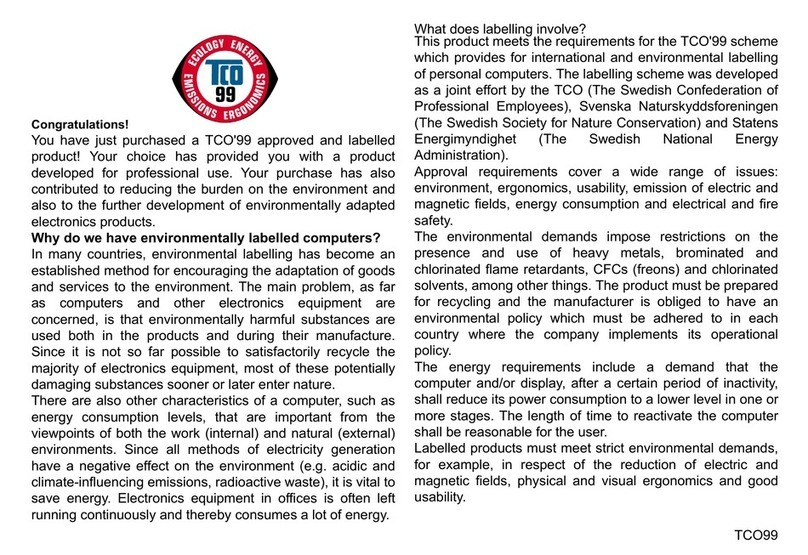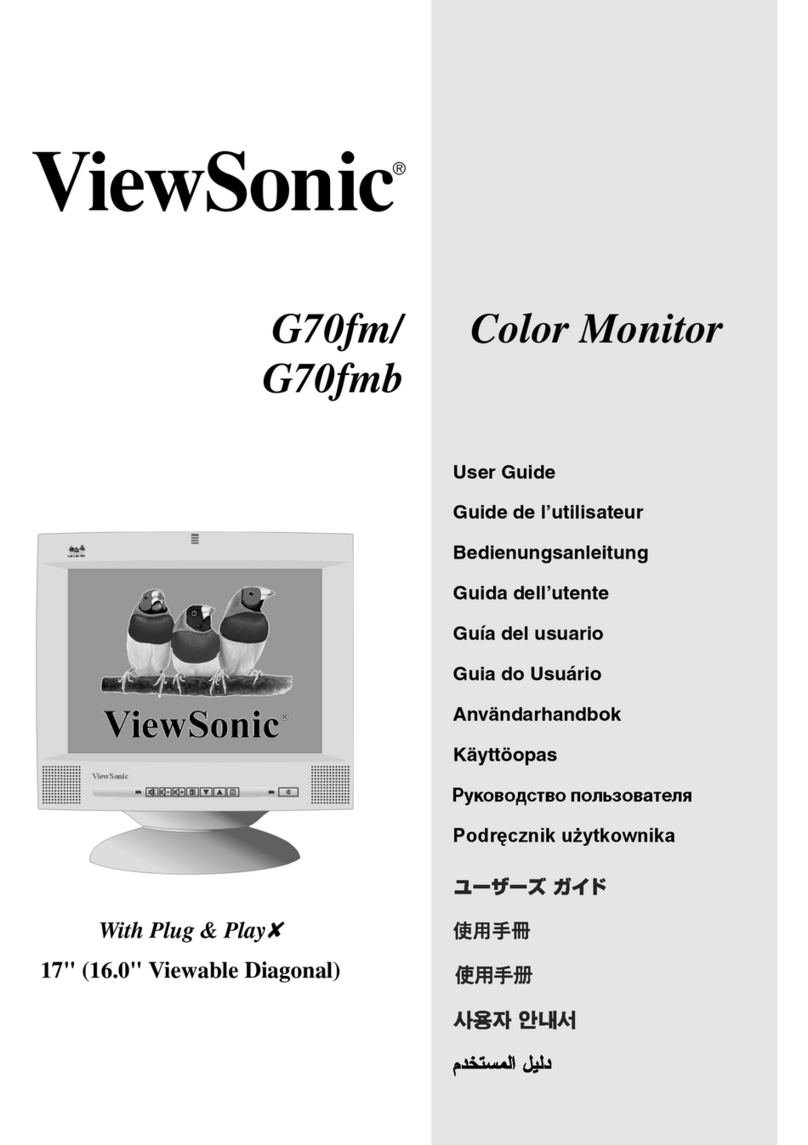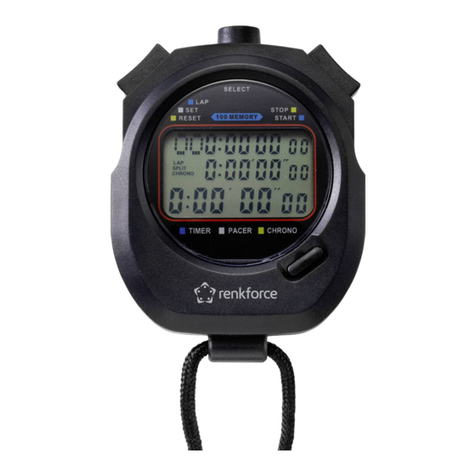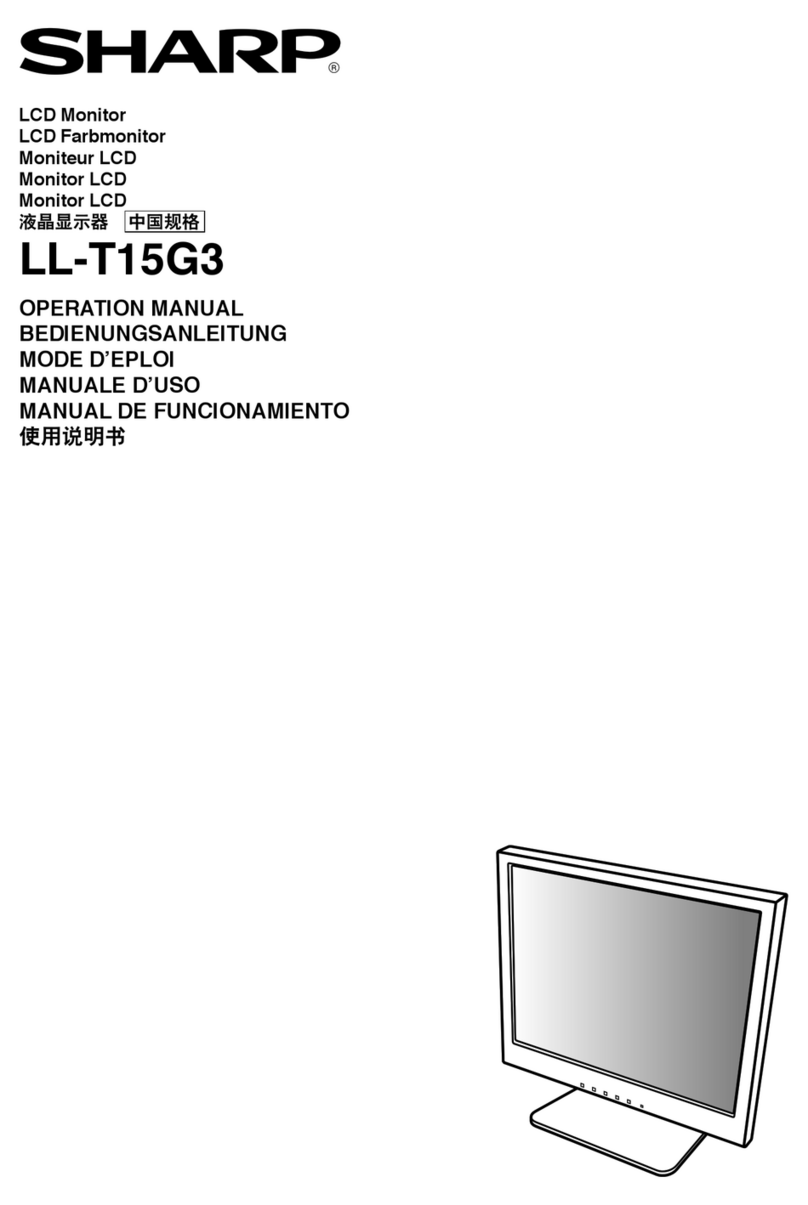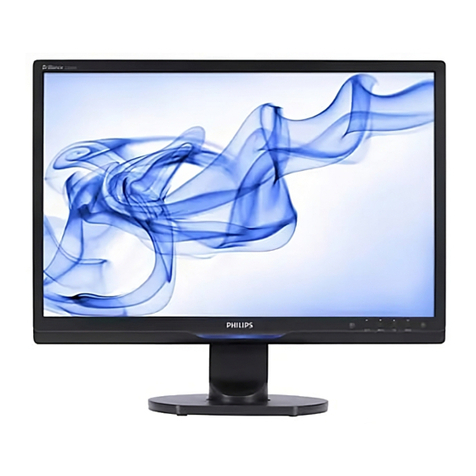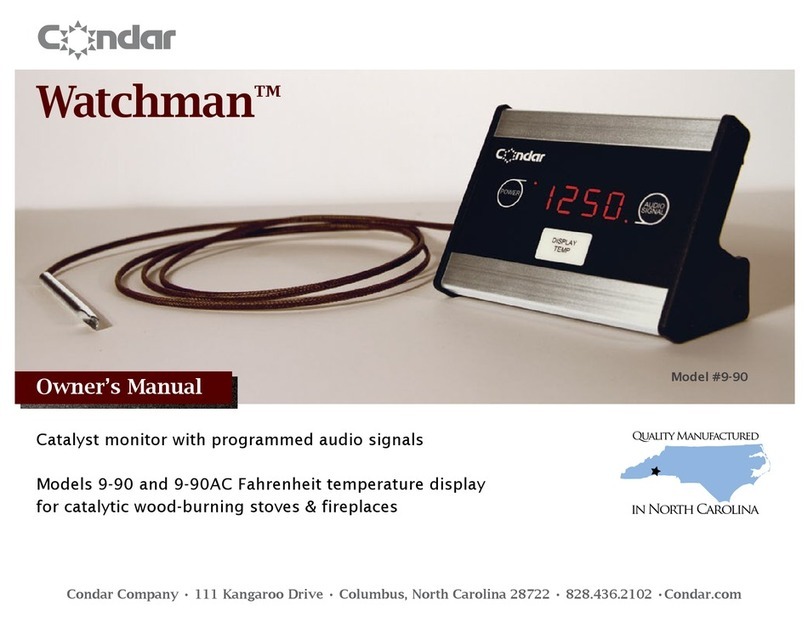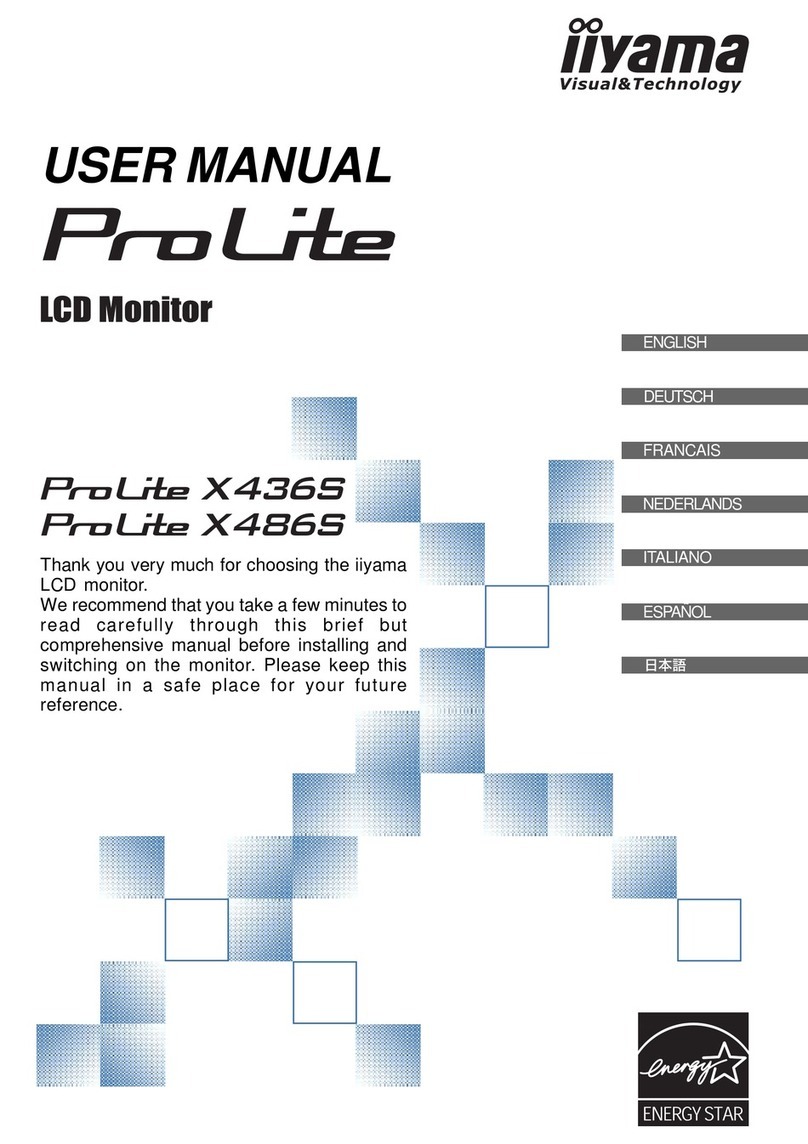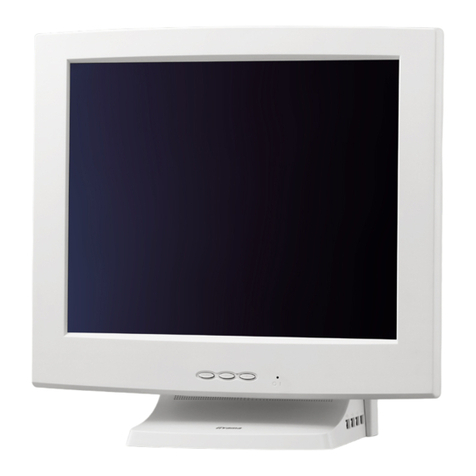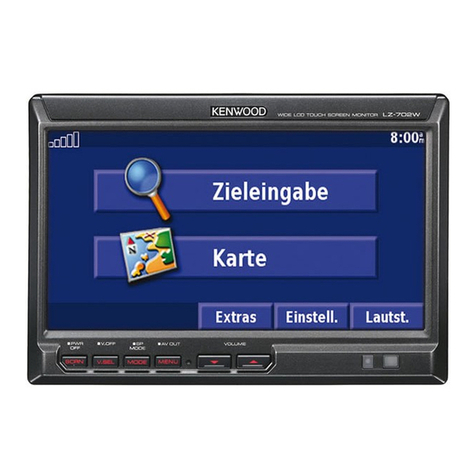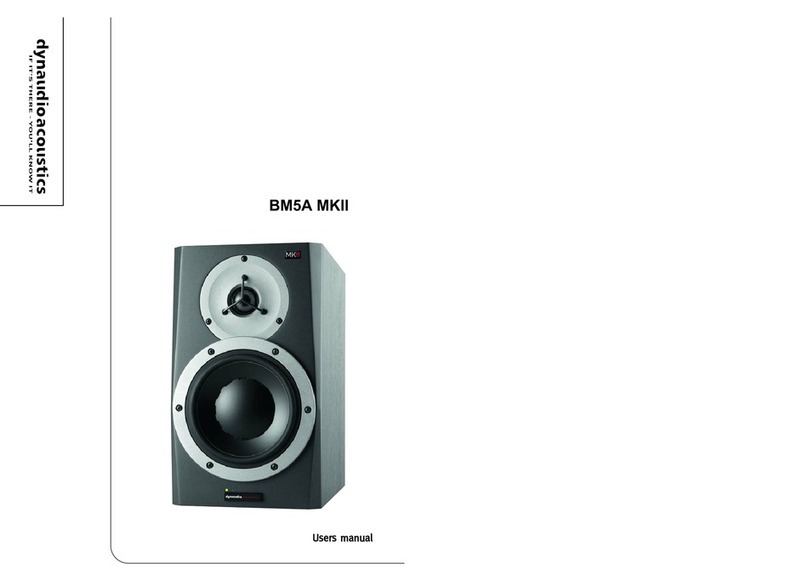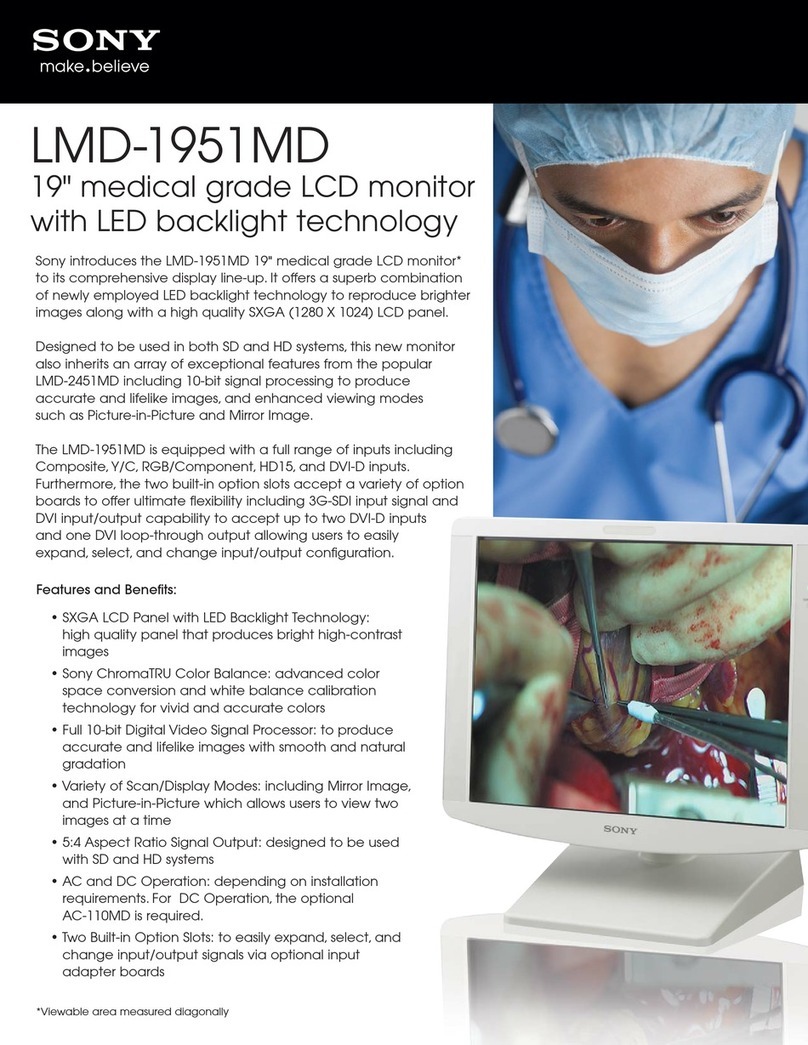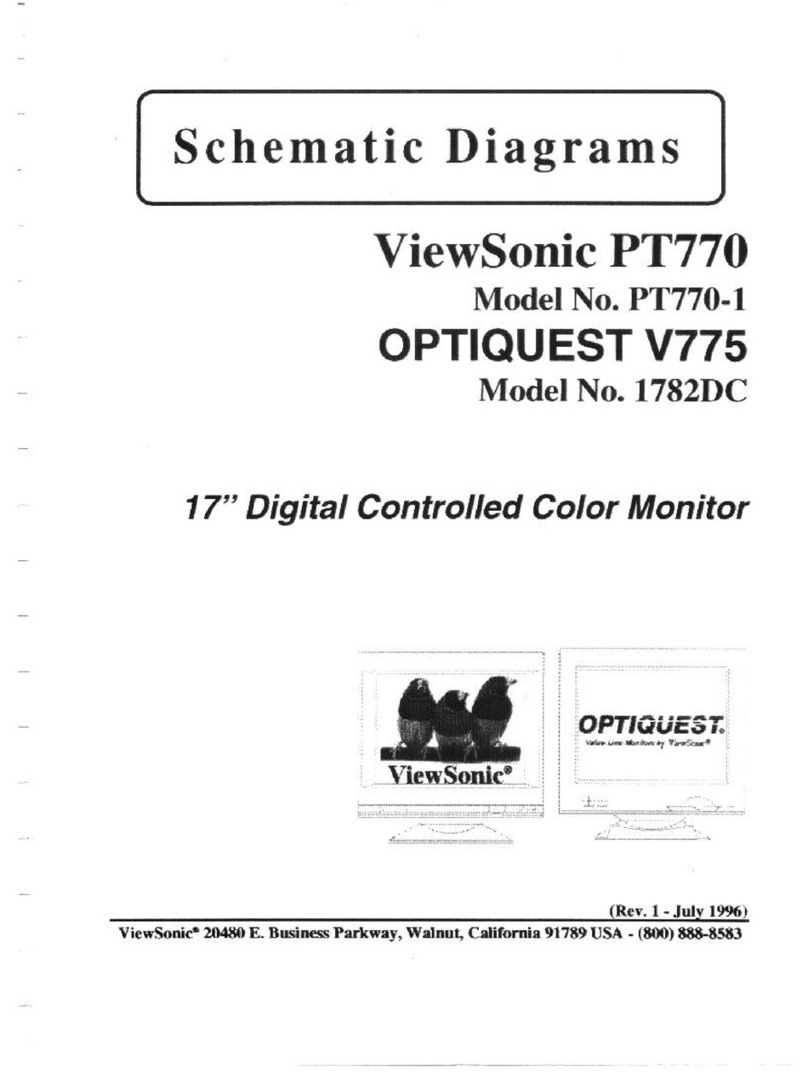IFR COM-120C User manual

comMQRPc c”’’š“‹…ƒ™‹”“˜
o•‡—ƒ™‹”“ mƒ“šƒ‘
QPPRMPVPQMRpP
advancing wireless test
s‡—›‹…‡ m”“‹™”—

OPERATION MANUAL
COMMUNICATIONS SERVICE MONITOR
COM-120C
PUBLISHED BY
IFR
COPYRIGHT IFR2002
All rights reserved. No part of this publication may be reproduced, stored in a retrieval system,
or transmitted in any form or by any means, electronic, mechanical, photocopying, recording or
otherwise without the prior permission of the publisher.
10200 West York / Wichita, Kansas 67215 U.S.A. / (316) 522-4981 / FAX (316) 524-2623

CABLE STATEMENT
Double shielded and properly terminated external interface cables must be used with this
equipment when interfacing with the RS-232 and IEEE-488.
For continued EMC compliance, all external cables must be 3 meters or less in length.
NOMENCLATURE STATEMENT
The COM-120C Communications Service Monitor is the official nomenclature for the EMC and
Safety compliant COM-120C Communications Service Monitor. In this manual the COM-120C
refers to the COM-120C Communications Service Monitor. The generic terms unit and Test
Set also refer to the COM-120C Communications Service Monitor.
BATTERY STATEMENT
For continued EMC compliance with EN61000-3-2:1995/A14:2000, always allow a discharged
battery to recharge in Stand-by Mode.

SAFETY FIRST: TO ALL OPERATIONS PERSONNEL
REFER ALL SERVICING OF UNIT TO QUALIFIED TECHNICAL PERSONNEL. THIS UNIT CONTAINS NO
OPERATOR SERVICEABLE PARTS.
CASE, COVER OR PANEL REMOVAL
Removing protective covers, casings or panels from this unit exposes the operator to electrical hazards that
can result in electrical shock or equipment damage. Do not operate this unit with the case, cover or panels
removed.
SAFETY IDENTIFICATION IN TECHNICAL MANUAL
This manual uses the following terms to draw attention to possible safety hazards, that may exist when
operating or servicing this equipment.
CAUTION: THIS TERM IDENTIFIES CONDITIONS OR ACTIVITIES THAT, IF IGNORED, CAN RESULT IN
EQUIPMENT OR PROPERTY DAMAGE (E.G., FIRE).
WARNING: THIS TERM IDENTIFIES CONDITIONS OR ACTIVITIES THAT, IF IGNORED, CAN RESULT IN
PERSONAL INJURY OR DEATH.
SAFETY SYMBOLS IN MANUALS AND ON UNITS
CAUTION: Refer to accompanying documents.
AC OR DC TERMINAL: Terminal that may supply or be supplied with ac or dc voltage.
DC TERMINAL: Terminal that may supply or be supplied with dc voltage.
AC TERMINAL: Terminal that may supply or be supplied with ac or alternating voltage.
SWITCH OFF: AC line power to the device is OFF.
SWITCH ON: AC line power to the device is ON.
DANGEROUS VOLTAGE: Indicates electrical shock hazard due to high voltage levels.
CAT II INSTALLATION CATEGORY II: Denotes impulse withstand voltage of 2500 V.
EQUIPMENT GROUNDING PRECAUTION
Improper grounding of equipment can result in electrical shock.
USE OF PROBES
Check the specifications for the maximum voltage, current and power ratings of any connector on the unit
before connecting it with a probe from a terminal device. Be sure the terminal device performs within these
specifications before using it for measurement, to prevent electrical shock or damage to the equipment.
AC POWER CORD
AC power cord must not be frayed or broken nor expose bare wiring when operating this equipment.
DC POWER CORD
DC power cord is non-terminated. Care should be taken when connecting to external dc source.
USE RECOMMENDED FUSES ONLY
Use only fuses specifically recommended for the equipment at the specified current and voltage ratings.
INTERNAL BATTERY
This unit contains a Sealed Lead-Acid Battery, see Battery Instructions for servicing.

CAUTION: SIGNAL GENERATORS CAN BE A SOURCE OF ELECTROMAGNETIC INTERFERENCE (EMI) TO
COMMUNICATION RECEIVERS. SOME TRANSMITTED SIGNALS CAN CAUSE DISRUPTION AND
INTERFERENCE TO COMMUNICATION SERVICES OUT TO A DISTANCE OF SEVERAL MILES.
USERS OF THIS EQUIPMENT SHOULD SCRUTINIZE ANY OPERATION THAT RESULTS IN
RADIATION OF A SIGNAL (DIRECTLY OR INDIRECTLY) AND SHOULD TAKE NECESSARY
PRECAUTIONS TO AVOID POTENTIAL COMMUNICATION INTERFERENCE PROBLEMS.

LIST OF EFFECTIVE PAGES
A
The manual pages listed below that are affected by a current
change or revision, are so identified by a revision number.
Date of Issue for original and changed pages are:
Original ........................... 0 .................... Feb 2002
TOTAL NUMBER OF PAGES IN THIS MANUAL IS 326 CONSISTING
OF THE FOLLOWING
Pg. No. Rev. No. Pg. No. Rev. No.
Title and Copyright....................0
Cable Statement .......................0
Safety......................................0
A through B..............................0
i through x................................0
1-1 through 1-24 .......................0
2-1 through 2-4.........................0
3-1 through 3-28 .......................0
4-1 through 4-72 .......................0
5-1 through 5-30 .......................0
6-1 through 6-116.................... 0
A-1 through A-4....................... 0
B-1 through B-4....................... 0
C-1 through C-2 ...................... 0
D-1 through D-12..................... 0
Index-1 through Index-4 ........... 0
Battery Title Page.................... 0
High Voltage Warning ..............0
ESD Caution Page................... 0
Page 1 through Page 4............. 0

THIS PAGE INTENTIONALLY LEFT BLANK.
B

i
PREFACE
SCOPE
This manual contains instructions for operating the COM-120C Communications Service
Monitor. The instruction level is relatively basic and presupposes no previous
experience on the part of the operator with a communication service monitor of this
type. A basic understanding of communication electronics and practical troubleshooting
methods is helpful. It is strongly recommended that the operator be thoroughly familiar
with this manual before attempting to operate the unit.
ORGANIZATION
The COM-120C Operation Manual is composed of the following sections:
SECTION 1 - INTRODUCTION
Provides an introduction to the unit and a brief overview of unit functions.
Specifications are also included in this section.
SECTION 2 - INSTALLATION
Provides a step-by-step procedure for placing the COM-120C into operation.
SECTION 3 - CONTROLS, CONNECTORS AND INDICATORS
Identifies and functionally describes all COM-120C controls, connectors and
indicators. All Operation Screens and Menus are identified and available
parameters listed and explained.
SECTION 4 - OPERATION
Provides instructions for operating the COM-120C Mode Operating Screens and
Menus. In addition, this section contains a selection of basic operating
procedures pertaining to all major functions of the Test Set.
SECTION 5 - COMMON PRACTICES
Identifies and presents some examples of common practices the operator can use
to help become familiar with the COM-120C operation.
SECTION 6 - OPTIONS
Identifies and provides instructions for operating the options available with the
COM-120C.

ii
TABLE OF CONTENTS
SECTION 1 - INTRODUCTION
Paragraph Title Page
1-1 General..........................................................................................1-1
1-2 RF Generate Operation....................................................................1-2
1-3 RF Receive Operation......................................................................1-3
1-4 Duplex Operation ............................................................................1-4
1-5 Audio Function Generators...............................................................1-5
1-6 Oscilloscope...................................................................................1-6
1-7 Spectrum Analyzer ..........................................................................1-7
1-8 Meters ...........................................................................................1-9
1-9 Options ..........................................................................................1-10
1-10 COM-120C Product Specifications.....................................................1-11
SECTION 2 - INSTALLATION
Paragraph Title Page
2-1 General..........................................................................................2-1
2-2 Precautions ....................................................................................2-1
2-3 Power Up Procedures ......................................................................2-3
2-3-1 Applying AC Power..........................................................................2-3
2-3-2 Applying External DC Power.............................................................2-3
2-3-3 Battery Power Operation (Option 01).................................................2-3
SECTION 3 - COMPOSITE
Paragraph Title Page
3-1 Front Panel Controls........................................................................3-1
3-2 Rear Panel Controls ........................................................................3-7
3-3 Screens, Soft Function Keys and Menus ............................................ 3-9

iii
SECTION 3 – COMPOSITE (CONT)
Paragraph Title Page
3-3-1 Soft Function Keys ..........................................................................3-9
3-3-2 Cursor Movement ............................................................................3-9
3-3-3 Editing Fields Using Data Scroll Keys and Spinner..............................3-9
3-3-4 Editing Numeric Data Fields .............................................................3-11
3-3-5 Making Selections From Menus.........................................................3-11
3-3-6 Escaping From Edit Without Change..................................................3-11
3-3-7 RF Generate Screen........................................................................3-12
3-3-8 RF Receive Screen..........................................................................3-14
3-3-9 Duplex Screen.................................................................................3-17
3-3-10 Oscilloscope Screen ........................................................................3-20
3-3-11 Spectrum Analyzer Screen ...............................................................3-22
3-3-12 Audio/Data/Signaling Generators Screen ...........................................3-24
3-3-13 Meter Screens.................................................................................3-25
3-3-14 Memory Lists and Storage of Parameters...........................................3-26
3-3-15 Utility Function Screens ...................................................................3-27
SECTION 4 - OPERATION
Paragraph Title Page
4-1 RF Generate Operation....................................................................4-1
4-1-1 General RF Generate Operation........................................................4-1
4-1-2 SINAD Meter Operation....................................................................4-13
4-1-3 Distortion Meter Operation ...............................................................4-16
4-1-4 Audio Frequency Level Meter Operation ............................................4-18
4-1-5 Oscilloscope Operation Screen .........................................................4-20
4-1-6 Spectrum Analyzer Operation Screen ................................................4-25
4-1-7 Store And Recall Operation ..............................................................4-29

iv
SECTION 4 - OPERATION (CONT)
Paragraph Title Page
4-2 RF Receive Operation......................................................................4-31
4-2-1 General RF Receive Operation .........................................................4-31
4-2-2 SINAD Meter Operation....................................................................4-38
4-2-3 Distortion Meter Operation ...............................................................4-38
4-2-4 FM Deviation Meter Operation ..........................................................4-39
4-2-5 AM Modulation Meter Operation........................................................ 4-41
4-2-6 Phase Modulation Meter Operation....................................................4-43
4-2-7 RF Power Meter Operation ............................................................... 4-45
4-2-8 Received Level Meter Operation .......................................................4-47
4-2-9 RF Frequency Error Meter Operation.................................................4-49
4-2-10 Audio Frequency Counter.................................................................4-51
4-2-11 Oscilloscope Operation Screen.........................................................4-53
4-2-12 Distortion Meter ..............................................................................4-53
4-2-13 Store And Recall Operation..............................................................4-53
4-3 Duplex Operation ............................................................................4-54
4-3-1 General Duplex Generate Operation..................................................4-54
4-3-2 General Duplex Receive Operation....................................................4-59
4-4 Independent Oscilloscope Operation Screen ......................................4-62
4-5 Independent Spectrum Analyzer Operation Screen..............................4-62
4-6 Independent Audio/Data/Signaling Generators.................................... 4-63
4-6-1 Audio Generator-1 Operation............................................................4-63
4-6-2 Audio Generator-2 Operation............................................................4-66
4-6-3 Data Generator Operation................................................................4-67
4-6-4 DTMF Generator Operation .............................................................. 4-68

v
SECTION 4 - OPERATION (CONT)
Paragraph Title Page
4-7 Meters Operation.............................................................................4-69
4-7-1 Digital Voltmeter Operation ..............................................................4-69
SECTION 5 - COMMON PRACTICES
Paragraph Title Page
5-1 RF Generate...................................................................................5-1
5-1-1 Generating FM Modulated RF Signal .................................................5-2
5-1-2 Generating AM Modulated RF Signal .................................................5-4
5-1-3 Generating PM Modulated RF Signal .................................................5-6
5-1-4 Generating DCS Coded RF Signal.....................................................5-8
5-1-5 Generating DTMF Coded RF Signal...................................................5-10
5-1-6 Generating RF Signal Using External Modulation................................5-12
5-1-7 Generating Microphone Modulated RF Signal .....................................5-14
5-1-8 Encoding 2-Tone Sequential Format..................................................5-16
5-2 RF Receive.....................................................................................5-19
5-2-1 Receiving FM Modulated RF Signal ...................................................5-20
5-2-2 Receiving AM Modulated RF Signal...................................................5-22
5-2-3 Receiving PM Modulated RF Signal...................................................5-24
5-2-4 Decoding 2-Tone Sequential Format..................................................5-26
5-3 Duplex............................................................................................5-28

vi
SECTION 6 - OPTIONS
Paragraph Title Page
6-1 Internal Battery (Option 01)..............................................................6-1
6-2 Oven Crystal Oscillator Frequency Standard (Option 02).....................6-1
6-3 30 kHz IF Filter (Option 03).............................................................. 6-1
6-4 Variable Audio Generator 2 (Option 04)............................................. 6-1
6-5 Generate Amplifier (Option 05).........................................................6-1
6-6 Data Generator/Bit Error Rate (BER) Meter (Option 07) ......................6-2
6-6-1 BER Meter Configuration Section...................................................... 6-4
6-6-2 Receive Data Configuration Section .................................................. 6-6
6-6-3 Send Data Configuration Section ......................................................6-8
6-7 Single Sideband Receive Filter (Option 08)........................................6-9
6-7-1 General.......................................................................................... 6-9
6-7-2 Description of Receive Function........................................................6-9
6-8 RCC Signaling Formats (Option 09)...................................................6-10
6-9 Audio/Digital Signaling Formats (Option 11).......................................6-10
6-9-1 Modulating RF Signals with Digital Signaling Formats .........................6-13
6-9-2 Encoding Digital Signaling Formats For Audio Signal ..........................6-15
6-9-3 Decoding Digital Signaling Formats...................................................6-16
6-9-4 Testing A Receiver Using Digital Signaling Formats............................ 6-17
6-9-5 Testing A Transmitter Using Digital Signaling Formats ........................ 6-18
6-10 Spectrum Analyzer Tracking Generator (Option 12) ............................6-19
6-11 IEEE-488 (GPIB) Interface (Option 13)..............................................6-20
6-11-1 General.......................................................................................... 6-20
6-11-2 Configuring For Remote Operations Using GPIB.................................6-20
6-12 Clearchannel LTR(Option 14)........................................................6-21

vii
SECTION 6 - OPTIONS (CONT)
Paragraph Title Page
6-12-1 General..........................................................................................6-21
6-12-2 Accessing The Clearchannel LTRTrunking Test System ...................6-22
6-12-3 LTR Trunking Repeater Simulation....................................................6-23
6-12-4 Transmit Trunking Data Block...........................................................6-27
6-12-5 Receive Trunking Data Block............................................................6-28
6-12-6 LTR Trunking Radio Simulation.........................................................6-29
6-12-7 Transmit Trunking Data Block...........................................................6-33
6-12-8 Receive Trunking Data Block............................................................6-34
6-12-9 LTR Trunking Auxiliary Setup Screen ................................................6-35
6-12-10 Auxiliary Setup Screen Configuration.................................................6-37
6-12-11 Repeater Simulator Operation...........................................................6-38
6-12-12 LTR Radio Handshake Test ..............................................................6-40
6-12-13 LTR Radio Handoff Test...................................................................6-41
6-12-14 LTR Radio Receive Test...................................................................6-42
6-12-15 Radio Simulator Operation ...............................................................6-43
6-12-16 LTR Repeater Handshake Test .........................................................6-45
6-13 AMPS Cellular Testing (Option 15)....................................................6-46
6-13-1 AMPS Cell Site Simulator Setup........................................................6-46
6-13-2 AMPS Cell Site Simulator Main and Setup Menus ...............................6-47
6-13-3 AMPS Cell Site Simulator Automatic Tests.........................................6-52
6-13-4 Registration Test.............................................................................6-53
6-13-5 Handoff Test...................................................................................6-57
6-13-6 Audio Test......................................................................................6-58
6-13-7 Mobile Init Test ...............................................................................6-59

viii
SECTION 6 - OPTIONS (CONT)
Paragraph Title Page
6-13-8 Cell Init Test...................................................................................6-60
6-13-9 Automatic Test Printout....................................................................6-61
6-13-10 AMPS Cell Site Simulator Manual Tests.............................................6-62
6-13-11 Registration Test.............................................................................6-63
6-13-12 Mobile Init Test...............................................................................6-64
6-13-13 Cell Init Test...................................................................................6-67
6-14 EDACS Trunking (Option 16)............................................................6-70
6-14-1 EDACS Trunking Setup Screen.........................................................6-71
6-14-2 EDACS Trunking Channel Assignments .............................................6-72
6-14-3 EDACS Trunking Automatic Test....................................................... 6-73
6-14-4 EDACS Trunking Automatic Test Execution........................................6-74
6-14-5 EDACS Trunking Automatic Test Results ...........................................6-76
6-14-6 EDACS Trunking Manual Test...........................................................6-82
6-14-7 EDACS Trunking Manual Test-Repeater Simulator..............................6-83
6-14-8 EDACS Trunking Manual Test-Radio Simulator...................................6-88
6-14-9 EDACS High-Speed Data Capture (Scope)......................................... 6-93
6-14-10 EDACS Store and Recall..................................................................6-94
6-14-11 EDACS Trunking Operational Notes ..................................................6-95
6-15 MPT 1327 Trunking (Option 17) ........................................................6-96
6-15-1 Setup Network Definition..................................................................6-97
6-15-2 Syscode Calculation ........................................................................6-99
6-15-3 Channel Numbering.........................................................................6-100
6-15-4 Base Frequencies............................................................................6-101
6-15-5 Trunking Simulator Screens..............................................................6-102

ix
SECTION 6 - OPTIONS (CONT)
Paragraph Title Page
6-15-6 Repeater Simulator..........................................................................6-104
6-15-7 Testing Radio Units .........................................................................6-105
6-15-8 MPT 1327/ MPT 1343 Numbering Schemes ........................................6-106
6-15-9 Radio Simulator...............................................................................6-107
6-15-10 Automatic Test Mode, Test Selection.................................................6-108
6-15-11 Parametric Limits ............................................................................6-110
6-15-12 Test Execution ................................................................................6-112
6-15-13 Parametric Results ..........................................................................6-113
6-15-14 Off-Air Monitor ................................................................................6-114
APPENDICES
Appendix Title Page
Appendix A User I/O Connectors and Pin-Out Table.............................................A-1
Appendix B Abbreviations..................................................................................B-1
Appendix C Repacking For Shipping ...................................................................C-1
Appendix D Soft Function Keys ..........................................................................D-1
INDEX
BATTERY/ VOLTAGE/ FUSE INSTRUCTIONS
Title Page
Power Source Requirement................................................................................ Page-1
AC Fuse Replacement....................................................................................... Page-1
DC Fuse Replacement....................................................................................... Page-2
Battery Replacement......................................................................................... Page-2
Battery Fuse Replacement................................................................................. Page-4

x
THIS PAGE INTENTIONALLY LEFT BLANK.

1-1
SECTION 1
INTRODUCTION
1-1 GENERAL
The COM-120Cis a microprocessorcontrolled, digitally synthesized communication
service monitor, which combines the operations of many different test instruments into a
single, compact unit. The COM-120Cis capable of performing these functions:
RF Generator RF Receiver
Full Duplex Operation Spectrum Analyzer
Audio/Data/Signaling
Generators Oscilloscope
DVM Deviation Meter
Distortion Meter SINAD Meter
Audio Frequency Meter Frequency Error Meter
RF Power Meter Modulation Meter
Received Level Meter
The COM-120Cutilizes an alphanumeric keypad, dedicated function keys, multitask
“Soft”Function Keys and a high resolution, monochrome flat panel display. Perform
tests remotely or manually. Microprocessor controlled memory allows parameter
storage and recall. For instance, store and recall Oscilloscope and Spectrum Analyzer
traces for signal comparison.
The COM-120Cperforms a multitude of important functions simultanelusly. The three
basic modes of operation are: RF Generate Operation, RF Receive Operation and
Duplex Operation. These modes allow generate and receive functions in duplex and
simplex mode, while testing other aspects of the Unit Under Test like Modulation Level,
Power, Sensitivity and Frequency Error.
Additionally, the COM-120Cprovides these independent test instruments:
Audio/Data/Signaling Generators
Oscilloscope
Spectrum Analyzer
Meters

1-2
SECTION 1
INTRODUCTION
1-2 RF GENERATE OPERATION
Generating
The COM-120Cis capable of generating CW ormodulated signals from 250 kHz to
1000 MHz.
The output level is variable from -130 to -13 dBm.
Modulation types include AM, FM and PM (Phase Modulation) or apply an external
modulation source. Generate DTMF, User Defined Tone Codes or Digital Codes.
Meters
Metering functions include SINAD, Distortion and Audio Frequency Level.
Full Oscilloscope and Spectrum Analyzer operation is available.
Testing
Testing in RF Generate Operation includes Receiver Sensitivity, Receiver Selectivity,
and Audio Frequency Level measurements.
Use the decode capability for defined DCS and POCSAG
protocols using the Tone and Digital Coding functions.
O
T
e
n

1-3
SECTION 1
INTRODUCTION
1-3 RF RECEIVE OPERATION
Receiving
The COM-120Creceives CW and modulated signals ranging from 250 kHz to 1000 MHz.
In addition to single frequency operation, the COM-120Cdemodulates and detects AM,
FM and PM modulated signals and executes defined frequency sweep operations by
scanning a range of predetermined Frequency List settings.
The COM-120Creceives “off-the-air” signals via the Antenna Connectororconnects
directly to the Unit Under Test via the T/R Connector.
Meters
Receive Operation Metering functions include RF Power, AM Modulation, FM Deviation,
Phase Modulation, Distortion, Frequency Error, AF Frequency, Received Level and
SINAD.
Full Oscilloscope and Spectrum Analyzer operation is available.
Testing
Testing in RF Receive Operation includes measuring Carrier Power, Modulation,
Distortion, SINAD and RF Frequency Error.
Use the independent Audio/Data/Signaling Generators to
modulate the Unit Under Test when performing RF Receive
Operation.
O
T
e
n
Table of contents
